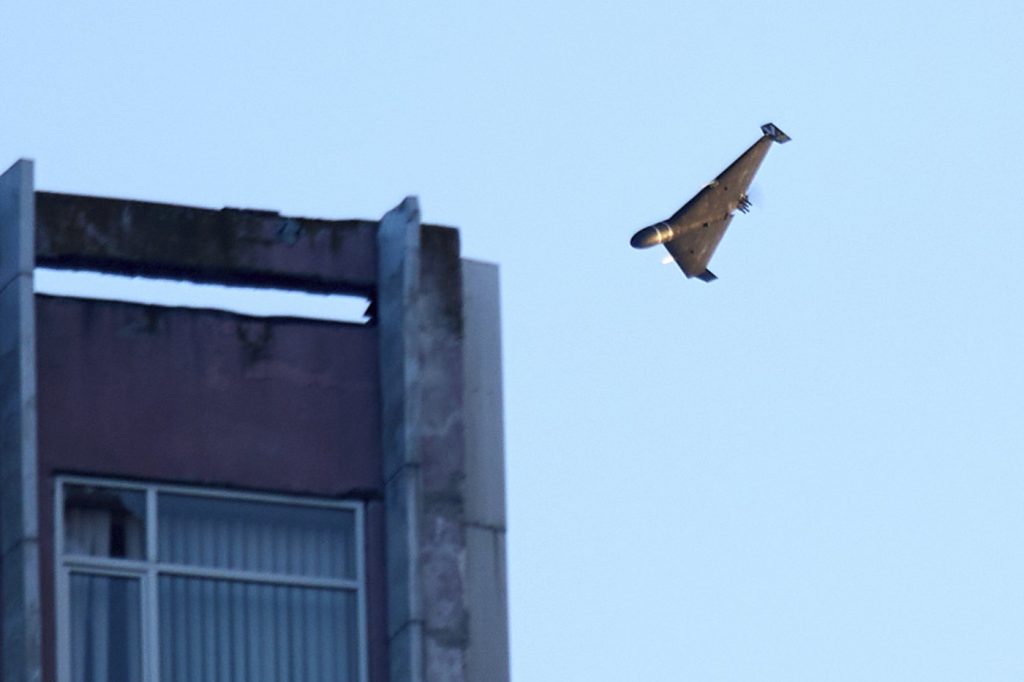KYIV, Ukraine (AP) — In a dramatic escalation of its military operations, Russia has launched its largest aerial assault on Ukraine since the onset of its full-scale invasion in February 2022. A Ukrainian official disclosed on Sunday that the attack involved a total of 537 aerial weapons, including 477 drones (along with decoys) and 60 missiles. Ukraine's air force reported that 249 of these were successfully intercepted, while 226 were believed to have been lost due to electronic jamming.
The assault was described as “the most massive airstrike” against Ukraine to date, targeting several regions including areas far from the front line, as reported by Yuriy Ihnat, the head of communications for Ukraine's air force. The raid resulted in fatalities, with three individuals reported dead in the Kherson, Kharkiv, and Dnipropetrovsk regions. Additional casualties included one person killed in an airstrike in Kostyantynivka, and another death attributed to artillery shelling in the city of Kherson, along with the discovery of a 70-year-old woman's body under debris in the Zaporizhzhia region.
In Lviv, a significant fire erupted at an industrial facility in Drohobych following a drone strike, which also left parts of the city without electricity. Ukrainian forces, utilizing F-16 warplanes provided by their Western allies, encountered significant loss when one such aircraft crashed after sustaining damage while targeting incoming aerial attacks, resulting in the death of the pilot.
In parallel developments, Russia has been enhancing its drone capabilities and operational tactics, achieving notable success in its strikes against Ukraine. Reports claimed Russian troops were continuing to advance in the Donetsk region, while the Russian Defense Ministry announced the interception of three Ukrainian drones overnight. In addition, injuries were reported in the city of Bryansk, Russia, following a Ukrainian drone attack, which also saw more drones being intercepted in the region.
In a significant claim, Russia announced it had gained control over the village of Novoukrainka in the Donetsk region, amidst what has been characterized as slow but steady advancements along the extensive 1,000-kilometer front line, despite substantial troop losses and damage to military equipment.
Moreover, in a development signaling potential diplomatic attempts, Russian President Vladimir Putin recently expressed Moscow's readiness for renewed peace talks, specifically in Istanbul, following two previous rounds of inconclusive meetings between Russian and Ukrainian delegations.
Ukrainian President Volodymyr Zelenskyy made headlines by signing a decree to withdraw Ukraine from the Ottawa Convention, which bans antipersonnel land mines. This policy change, as stated by a Ukrainian lawmaker, aligns with similar decisions made by the Baltic States and Poland. The Ottawa Convention, established in 1997, aims to safeguard civilians from the dangers of land mines, which continue to pose threats long after conflicts have ceased. Roman Kostenko, head of the Ukrainian parliamentary committee for national security, defended the measure, emphasizing that the realities of war necessitate it, especially given that Russia is not a signatory to the convention and is reportedly utilizing land mines extensively against Ukrainian forces and civilians.
As the conflict continues to evolve, the situation remains tense, with crucial implications for both military operations and international diplomacy in the region.












